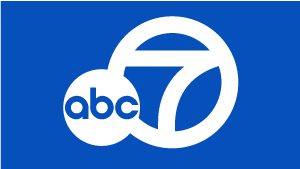Magical Bridge Playgrounds bridge the gap between abilities

PALO ALTO, Calif. -- PALO ALTO, Calif. --- When Olenka Villarreal visited playgrounds with her two daughters, Ava and Emma - one with disabilities, one without - a space of joy and unity quickly became a space of dread and isolation. Ava could not hold onto the swings; none of the 34 public parks nearby were built with her in mind.
"It was very soon after that I realized that my public playgrounds weren't welcoming to a family like mine who has two different children," Villarreal said.
She asked the City of Palo Alto if these playgrounds were ADA-compliant, to which they replied, "Oh sure they are."
Instead of accepting this reality, Villarreal designed a new one. She founded and is the CEO of The Magical Bridge Foundation, a Bay Area nonprofit that creates inclusive playgrounds.
This nonprofit was born in the heart of Silicon Valley in Palo Alto. Although their first playground opened in 2015, their journey began seven years prior - researching design, fundraising more than $4 million, and rallying the community behind this effort. Today, there are six playgrounds open in the Bay Area and ten more underway, locally and internationally.
The experience of isolation is a common thread for families who have children with disabilities.
Joel Vasquez described this feeling as "weird," not being able to play like his friends.
"He was always being left to the side and just kind've watching from a side, playing around the places that he could get into," his mother, Monica Chacon added. "Most of the playgrounds have tanbark, so he wasn't able to get through with his wheelchair."
Inclusive playgrounds are needed today more than ever, according to Villarreal. She points to recent data that up to one in four individuals in the United States has a visible or invisible disability.
"(When) you enter your public playground and you realize it hasn't been designed with you in mind, that's the beginning of those barriers that start to form," she said.
The effects of play are seen in its cognitive, community, behavioral and physical benefits. Playing alongside those of varying abilities increases empathy, improves cooperation, creates a greater sense of belonging and more, according to the nonprofit's website.
The nonprofit is guided by their name: Magical Bridge and motto: "Design for All."
"The reason it's called Magical Bridge is that (the playground) bridges the gap between those with and without abilities, disabilities, varying zip codes. It's the gap between all of us," Villarreal said. And the "Design for All" motto is simple; "Inclusion means everybody."
In the design development of these parks, Villarreal and her team poured their time into "old-fashioned" research, as much of this information was not readily available.
Staff talked to therapists, families, individuals using the playgrounds. They learned "predictability in spaces matters. So, our guests with autism or low vision also benefit from knowing that each area of the playground is going to experience a different item right."
This led to a defining feature of Magical Bridge playgrounds: "play zones." There are seven distinct zones ranging from an elaborate playhouse with an attached stage to wheelchair-accessible spinning.
Villarreal also mentioned "hideaway huts" as places for anyone in need of momentary quiet and are particularly helpful for those with autism. Also, the music zone features a laser harp that plays a pentatonic scale. "Compared to the Western scale, (the pentatonic scale) is more smoothing and relaxing and calming for somebody that feels overextended in an environment with a lot of people," Villarreal said.
The playgrounds constantly evolve as the organization "makes each playground more thoughtful as an example of meaningful design for everyone," Villarreal said.
The nonprofit does more than bring a playground, it brings the community together. Magical Bridge has recently introduced community programming at their parks like music concerts, art classes, story times, movie screenings and more.
After Villarreal opened the first playground, she thought she was "one and done," but immediately received "an avalanche of interest from around the world of people that wanted a Magical Bridge too."
Portola Valley mother, Katie Mumford, is in the beginning stages of advocacy and fundraising for a Magical Bridge Park for her own community. She hopes her perseverance will "inspire people in other communities to speak up and not set limits on what (they're) capable of doing. It'll affect not just my family, but the whole community."
Tessa Nye is a long-time classmate of Ava, the inspiration behind the foundation. Her mother, Kim Nye, said they were "lucky enough to have a front row seat" during Magical Bridge's evolution. When thinking back to the countless park visits, one memory stands out to Kim.
"I remember the moment when I had Tessa and Colton in swings and then their two sisters pushing them, and I remember thinking this is amazing," she said. "All four of my kids are playing together. They're all smiling. It's just a magical experience."
Villarreal looks forward to the day where being "inclusive" is a given, instead of an afterthought.
To learn more, visit here.


